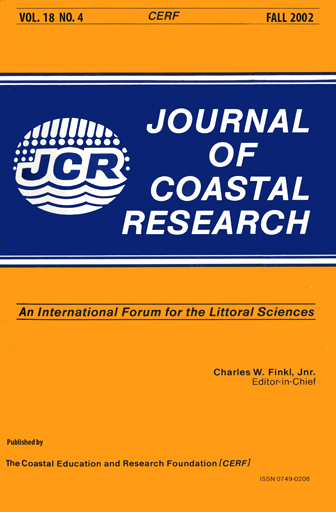Horseshoe Crab (Limulus polyphemus) Reproductive Activity on Delaware Bay Beaches: Interactions with Beach Characteristics
Keywords:
Biological monitoring, estuarine beaches, beach morphology, bioturbation, beach foreshore, sediment disturbance, migratory shorebirdsAbstract
We used results from a survey of horseshoe crab reproductive activity that was conducted in 1999 throughout Delaware Bay to examine the relationship between estimates of spawning females and egg deposition and analyze how that relationship varies with geography, time within a spawning season, beach morphology, and wave energy. We found that beach morphology and wave energy interacted with density of spawning females to explain variation in the density and distribution of eggs and larvae. For example, the quantity of eggs in surface sediment (i.e., eggs that are potentially available to foraging shorebirds) was associated with the density of spawning females, beach morphology, and wave energy. The association between beach morphology and live eggs in surface sediment was strong especially in late May (Percent Reduction in Error = 86% from regression tree model) where egg density was an order of magnitude higher on beaches <15 m wide (3.38*105 m-2; 90% CI: 2.29*105, 4.47*105) compared to wider beaches (1.49* 104 m-2; 90% CI: 4.47* 103, 2.53* 104). Results also indicate that, among bay-front beaches, horseshoe crabs prefer to spawn on narrow beaches, possibly because of reduced wave energy. At peak periods of spawning activity, density of spawning females was inversely related to foreshore width on mid-latitude beaches within Delaware Bay (t = -2.68, 7 df, p = 0.03). Because the distribution of eggs across the foreshore varied with beach morphology and widened as the spawning season progressed, methods used to sample eggs need to be robust to variation in beach morphology and applicable regardless of when the samples are taken. Because beach morphology and wave energy were associated with the quantity of eggs in surface sediment, certain beach types may be critical to the conservation of shorebird foraging habitat.


